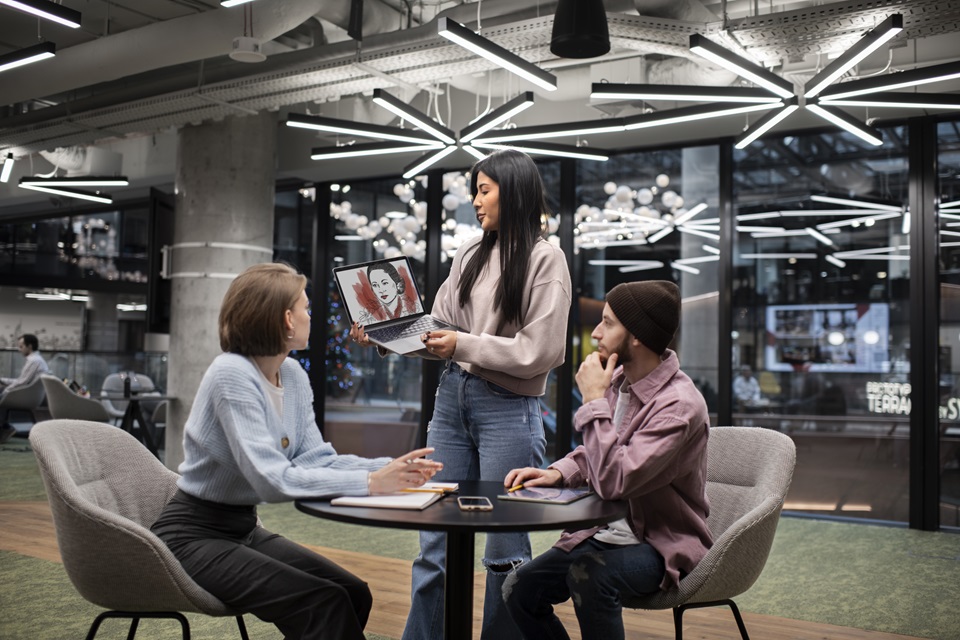In the age of remote work, flexible hours, and a multitude of job demands, the modern workplace has evolved dramatically. Office managers are now tasked with designing spaces that are not only functional but also enjoyable and conducive to productivity. Whether it’s digital integration, ergonomic furniture, or sustainable practices, here are ten features that any forward-thinking workplace should consider incorporating.
Table of Contents
1. Robust Audio-Visual Systems
An integral part of any workplace is the communication and presentation tools. Robust audio visual systems, whether it’s a fully equipped conference room with state-of-the-art displays or communal areas where employees can easily plug in and present, are non-negotiable. These systems facilitate seamless virtual meetings, on-the-fly collaborations, and impactful client presentations. Look for wireless sharing solutions, smart boards, and video conferencing set-ups that reduce the time spent dealing with technical difficulties.
2. Flexible Workspaces
Gone are the days when cubicles were the norm. Modern workplaces thrive on flexibility. From adjustable desks to lounge areas that can be transformed into impromptu meeting spaces, adaptable workstations encourage movement, collaboration, and a change in the working environment. This versatility not only supports different work styles but also boosts employee morale and engagement.
3. High-Speed Internet
No matter the size of the company, a reliable, high-speed internet connection is fundamental. It’s the backbone of almost all work-related tasks—from sending emails to attending webinars, and everything in between. Consider investing in a network with strong Wi-Fi coverage and accessible Ethernet ports for those who need it. Additionally, prioritize cybersecurity to protect sensitive data from potential threats.
4. Integrated Technology
The best modern workplaces don’t just use technology—they integrate it seamlessly into their operations. This means having systems that can communicate with each other, reducing manual work and the risk of errors. Think of calendar apps that sync with meeting room bookings, or project management software that tracks tasks in real-time. When technology works together, employees work smarter.
5. Sustainable Practices
Sustainability is more than a trend—it’s a necessity in modern workplaces. Implementing energy-efficient practices, reducing waste, and creating an environment that supports health and wellness not only benefits the planet but also contributes to a positive workplace culture. Encourage recycling, use LED lighting, and offer ergonomic furniture made from eco-friendly materials.
6. Ergonomic Workstations
Employee health and well-being are central to a successful workplace. Ergonomic workstations, including chairs, desks, and peripherals, are designed to support the body in a natural position, thus reducing the risk of musculoskeletal issues. Encourage standing desks, provide adjustable monitor mounts, and offer policies that promote regular breaks to stretch and move.
7. Collaborative Tools & Software
In a modern workplace, collaboration knows no bounds. Cloud-based tools and project management software allow seamless communication and teamwork, no matter where employees are located. Whether it’s a shared document system like Google Workspace or platforms like Slack and Trello for instant messaging and task management, ensure that the tools you choose are user-friendly and company-wide adopted.
8. Focus Spaces
Amid the hustle and bustle of a modern open office, dedicated focus spaces are invaluable. Not everyone can concentrate on background noise, and having quiet areas designated for individual work or important calls is crucial. Think phone booths, soundproof rooms, or simply quieter corners designed for concentration. These areas provide a peaceful spot for work that requires deep focus.
9. Wellness Programs
A modern workplace prioritizes the holistic well-being of its employees. Incorporating wellness programs such as gym memberships, mental health resources, or regular yoga sessions can go a long way in supporting staff. This not only helps reduce stress and prevent burnout but also can be a significant factor in attracting and retaining top talent.
10. Continuous Learning Opportunities
Lastly, a workplace should be a site for growth and development. Implementing continuous learning opportunities, such as on-site workshops, access to online courses, or a dedicated learning budget, ensures that employees remain engaged and up-to-date with the latest industry trends. This investment in your team pays dividends in the form of improved performance and job satisfaction.
In summary, the modern workplace is a dynamic, multifaceted environment that supports employee well-being, collaboration, and innovation. By incorporating these ten essential features, office managers can create a space that not only meets the demands of the contemporary work culture but also sets the stage for future growth and success.



